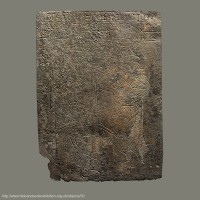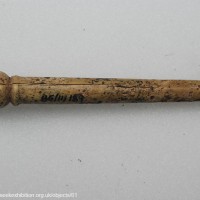Rule 34: Ink, parchment, knife, pens, notebooks, let all have ready.
Rule 50: Dice, knuckle-bones, quoits, and all games unworthy of a free man are to be avoided.
Statutes of the Bury St Edmunds Grammar School, 1550
For most children in fifteenth and sixteenth century England, an education involved learning through work or an apprenticeship. The growing number of free day schools meant formal schooling was a possibility for some, mainly boys from well-off families who could afford for at least one child not to work. During this period an estimated 5% of boys aged 7-18 were enrolled in schools.
Most evidence for formal education comes from written accounts, but this does not always give the whole story and sometimes archaeology can provide a glimpse into the schoolroom.











